What’s New in Fenestration?
Operable Glass Walls
In some building situations, there is a design intent or user need to provide extreme flexibility in the use of fenestration to the point of being able to open or close large wall areas completely. Operable glass walls are a product that do just that by going beyond the capabilities of conventional windows and instead using large, door-sized glass panels that can be readily opened or closed on demand. Like any other type of building fenestration, this system does not carry any structural load from the building but is reliant on being appropriately attached to the building and operates within a structurally supported opening.
When operable glass walls are used as part of the building enclosure, the performance of these systems is clearly critical. Comparing manufacturers and specifying operable glass walls that can show documented capabilities to appropriately withstand the challenges of wind, water, extreme temperatures, forced entry, impact, acoustics, and structural integrity is a critical first step. This review should include attention to details such as multipoint locking entry doors that may be equipped with tamper-resistant locking rods between panels to ensure they meet or exceed forced-entry testing for commercial-grade door panels. It may also include built-in adjustment and compensation points to ensure continued ease of operation if any building settling occurs.
This type of flexible fenestration has been popularly used in a wide range of building types, including restaurants, retail, hospitality, education, sports venues, and even residential projects, both single and multifamily. In restaurants and retail, for example, opening up the entrance makes the entire street front a welcoming door by eliminating barriers. This creates a seamless transition between the street or mall and the store or restaurant, helping to attract customers inside and increasing sales. Passersby easily see what is inside and are immediately engaged in the activity and ambience of the space. By opening up the inside to the outside, additional seating space can be readily accessible whether for restaurants, hotels, or other gathering places. This type of system can also provide comfortable and attractive four-season outdoor dining by enclosing a covered patio with energy-efficient, NFRC certified operable glass walls. When it is time to close up for the day, the glass wall continues to showcase the interior and provides a secure, energy-efficient, transparent facade that seals tight as a dust-control measure after hours. Restaurants are also able to benefit from operable glass walls that can increase seating capacity and boost revenue by opening a restaurant’s interior to surrounding outdoor spaces such as the street, a patio, or balcony. In mixed-use conditions, it is possible to create unique and memorable indoor/outdoor dining atmospheres for shoppers to enhance and extend their shopping experiences.
In hotels and other hospitality projects, similar benefits exist in using an operable glass wall that creates large, inviting entrances in the lobby area and throughout the hotel, producing a memorable first and lasting impression. It is also possible to incorporate beautiful views, hotel landscaping, natural daylight, and fresh air into the registration, dining, and guest room areas when the walls are open. When closed, the operable glass walls protect against the weather but also dampen sound transmission for the desired acoustical performance needed in hospitality and other settings. They can also be used as interior divisions in hotels and restaurants to allow personnel to quickly and easily incorporate or close off adjacent retail space, dining areas, bars, terraces, or meeting rooms. Such a separation might be appropriate between a time-specific breakfast area and the hotel public space after the food service has concluded. Or it might be a way to quickly create private banquet rooms, meeting rooms, or retail spaces that can still transmit light but significantly reduce sound transmission.
Matt Thomas is the marketing manager for NanaWall Systems and offers this perspective on the need for both design flexibility and high performance: “For us as a manufacturer, it’s important to supply a product that enables the architect to fulfill their vision but also to provide a product that lasts. These points are as important to the architect as the aesthetic since we provide the product they are specifying on behalf of their client.”
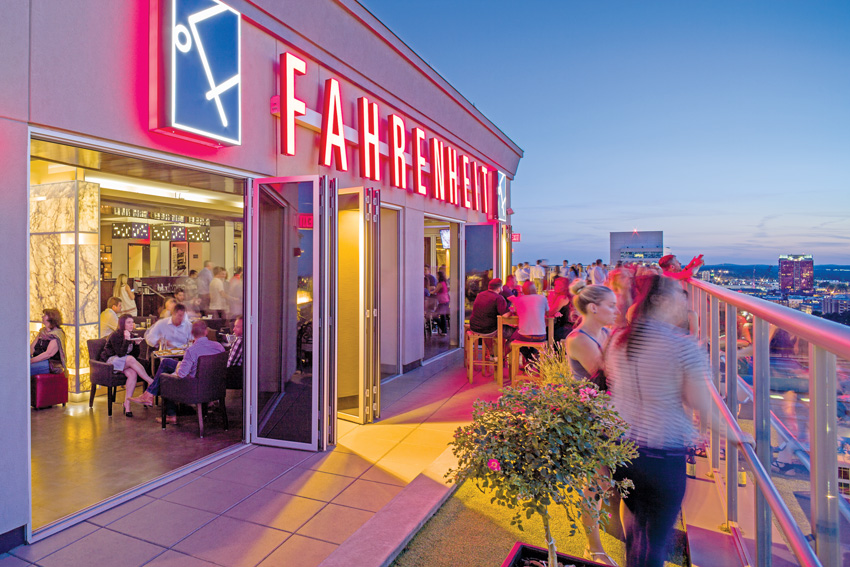
Photo courtesy of NanaWall Systems
Operable glass walls can be used to provide complete flexibility of building design by allowing indoor and outdoor spaces to be combined when the walls are opened or sealed off and protected when closed.
Rolling Doors
In many buildings, there is a need for a large fenestration opening that has less to do with moving people or creating a particular aesthetic but is more about moving equipment, goods, or machinery. This can be true in industrial settings, warehouse spaces, commercial enterprises, institutions, or others. In these cases, the design issue is usually centered on the type of door to provide and how that door operates. Roll-up, or coiling, doors have improved in recent years. New high-performance models operate at higher speeds, can cycle (open and close) more frequently without wearing out, and have been designed with energy efficiency and aesthetics in mind. This means that high-performance rolling steel doors can find their place as a part of a robust energy efficient building envelope—something that might not have been considered previously possible.
The biggest advances in rolling steel door design have focused on dramatically reducing air infiltration. In the past, rolling steel door products have not generally been known as being very air tight, which many people assume is because of the slatted design of the door (i.e., air gets through in between each slat of the door). In reality, that’s not actually the case since the slats in higher-performance rolling doors interlock and don’t account for much air infiltration. Instead, the primary locations of air leakage come from the perimeter of the door—particularly the sides and top of the door. This is due to the design of the guides (the steel channels on each side of the door) plus the top of the door where it coils up on itself. By addressing these areas with advanced sealing and gasketing techniques, manufacturers are able to demonstrate notably reduced air infiltration rates when the door is closed.
Of course, any door has the issue of creating air exchange when the door is open so in settings where frequent openings and closings are needed, the key becomes to minimize the time it takes to operate the door. Some high-performance rolling doors have open speeds of up to 24 inches per second. Other types of high-speed doors can open at speeds of up to 48 inches per second. This may sound like a large difference, but the average height of a door is 10 feet or less, meaning that the difference between the two opening speeds yields a net difference of less than 2 seconds. The best speeds for high-performance rolling steel products are often achieved using an electric operator with a variable-frequency drive that ensures a soft start and stop—reducing wear and tear on both the door and the operator. This type of direct drive design also means there’s no sprocket and chain to wear or replace.
Beyond door speed, activation devices play an important role in energy efficiency. If the sensors are set to open the door too soon or delay too long before closing, the door will remain open longer than needed. Properly placing and setting the sensors/activation devices will help assure that the timing of door opening and closing is optimized to balance both building operation needs and energy efficiency. In this way, rolling steel doors can address both without compromising on either.
Of course, there are other reasons to take a look at rolling steel doors too. They are known to be durable, often with a positive life-cycle assessment, and they typically meet the security needs of building owners and users in their facilities. Some are tested and rated for 300,000 cycles of generally maintenance-free performance—maximizing uptime for building operations and improving productivity. Since springs are the most frequent point of failure for high-cycle products, doors that feature direct drive operation without the need for springs eliminate that maintenance concern. They are also available with insulation in the doors, which will improve the overall U-factor of this fenestration type to be likely higher than some others.
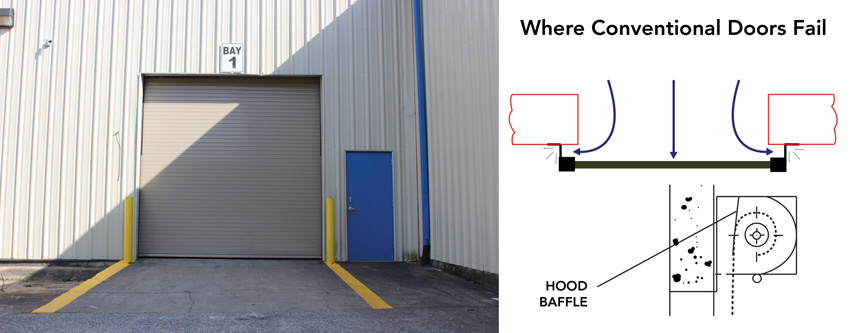
Images courtesy of CornellCookson, Inc.
Rolling steel doors are useful in many buildings, but air leakage around the perimeter of the doors needs to be addressed to assure that they are energy efficient as well as functional.
When considering the use of rolling steel doors in a project, there are four common design criteria to consider. First, how many times does the door need to open each day? Occasional use will suggest a standard door compared to a very high usage demand necessitating a high-performance door system. Directly related, the second thing to consider is the distribution of traffic or traffic patterns, including how it’s spaced throughout the day. This may suggest that different doors are subject to different usage patterns. Third is the degree of productivity impact that the doors can have. Higher speeds of opening with the correctly placed activation devices can shave seconds off of each pass through—which can turn into hours and then days of productivity gained. Finally, consider the nature of the opening in terms of usage. If it’s critical, then a springless design that can operate reliability throughout the life cycle of the door is likely the preferred choice.
In terms of appearance, there are a variety of powder coating, graphics, and custom design options that are available for rolling steel products. In some cases, custom solutions have been created for high-cycle applications that blend right into the facade of the building without it being obvious that a rolling door is even there. Manufacturers are quite willing to work with architects to make the door function requirements meet the design vision for the building.
Architect Marc Chavez, AIA, a construction specifier at ZGF Architects in Washington state, is proud of specifying high-performance products for his clients that comply with strict energy code requirements there. When looking at energy models for their projects, he previously found that the building envelope performance suffered from sectional or coiling doors that would leak air. “Selecting a high-performance door system is important as well as making sure it is not value engineered out of a project,” he explains. “Increased performance values are available in rolling doors that decrease air infiltration by as much as 95 percent.” Needless to say, he is convinced that others need to pay attention to these details too in order to achieve these results.
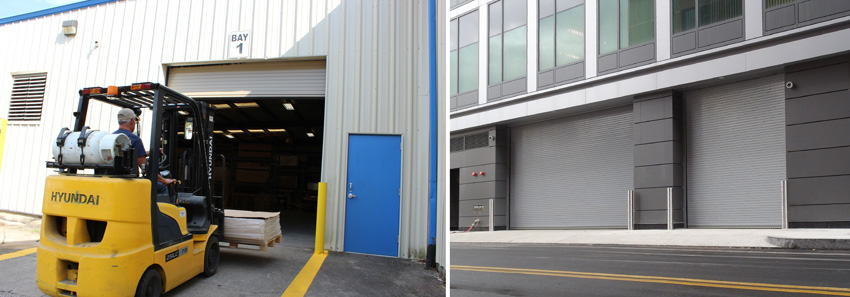
Photos courtesy of CornellCookson, Inc.
The successful operation of rolling steel doors depends on a variety of factors, including the opening and closing speed, the proper activation timing, and the ability to address the details on the inside and outside of the door.
Conclusion
Incorporating new or replacement fenestration into a building can make a dramatic difference on the overall performance, longevity, and appearance of that building. Understanding the performance principles and standards for different types of fenestration, as we have discussed, can make a significant difference on the operation of the building. Staying up to date on available products, systems, and other manufactured fenestration choices provides designers with a broad palette to create buildings that are better designed, more appealing to users, more energy efficient, and more cost effective to operate.
End Note
1COMFEN. Lawrence Berkley Laboratory. January 2013. https://windows.lbl.gov/software/comfen/comfen.html.
Peter J. Arsenault, FAIA, NCARB, LEED AP, is a practicing architect, green building consultant, continuing education presenter, and prolific author engaged nationwide in advancing building performance through better design. www.linkedin.com/in/pjaarch

|
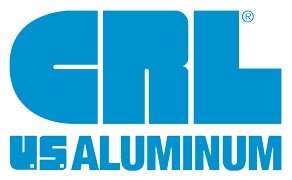
|

|


|
||
Notice

www.cornellcookson.com
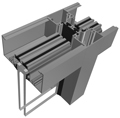
www.crl-arch.com/arctic

www.grahamwindows.com

www.Marvin.com

www.nanawall.com









